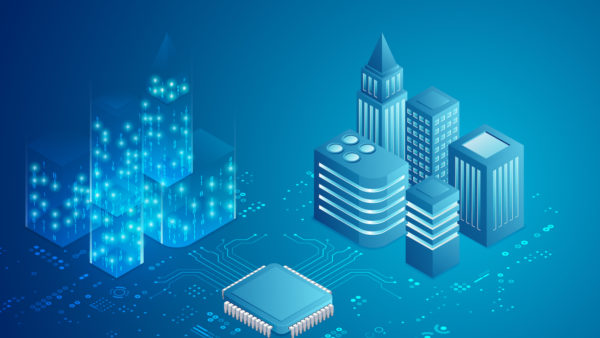Disappointed, dissatisfied and disaffected with digital twins? Let Andy Wohlsperger of Aecom disabuse you of those notions and demystify the digital twin.
When digital twins first entered the market, they were greeted with both the excitement and the expectation that new technological innovations are often met with, and providers and vendors naturally sought to capitalise. However, these expectations were often fed with the promises of concrete, significant cost savings in facility operations or maintenance.
Over a decade later, some of the mistakes made in those early days have been laid bare, where instances of overpromising, unmanaged expectations and lack of clarity around costs have led to jaded clients and asset owners.
It’s become clear that efforts need to be made to demystify digital twins and to combat the scepticism that has grown around the technology, and steps are beginning to be taken to address this. On 2 May, for example, Belfast Region City Deal and Innovate UK announced a £37.6m investment in the UK Digital Twin Centre, set to open this autumn, to help industry better understand, more easily develop and more meaningfully apply digital twins across operations.
How, then, can we as an industry remove the buzz from the buzzword and best impart an understanding of digital twin technology’s potential? The term itself poses a stumbling block, due to the lack of a clear consensus around the definition of a digital twin, hindering effective communication on the topic and contributing to a lack of clarity and understanding around the technology.
“How can we as an industry remove the buzz from the buzzword and best impart an understanding on the potential of digital twin technology?”
Dynamic and connected
To keep things simple, digital twins can best be defined as dynamic and connected digital representations of real-world entities that empower better decision-making, drive action, improve outcomes and enable predictive analytics. The key element to a successful digital twin, however, is to ensure it is developed with a specific use case in mind. There is no value in building a digital twin in and of itself – our goal is to provide a solution to a problem that a client might have, or might experience in the future.
The biggest contributor to the industry’s current scepticism was in how digital twin technology was initially pitched by many providers – very product-based and focused on the building space.
While digital twins certainly have a part to play when it comes to building development and construction, historically this has seen some overengineered, one-size-fits-all solutions, which often have not been best suited to the task at hand. This initial strategy raised expectations that the digital twin would solve all the client’s problems, only to ultimately underperform and disappoint.
At Aecom, digital twins are developed as an ecosystem of different data sources, brought together harmoniously to provide a solution that prioritises resolving the use case or specific business need – moving away from multipurpose, off-the-rack to a more tailored, quick-time-to-value approach.
Achieving value for the end user comes from determining what interface is required to provide the information they need, reducing things to their simplest components to address the use case at hand. By starting light, with a vision and long-term strategy in place, you can continue to build up and iterate your digital ecosystem where you can keep plugging in new technologies and integrating data sources, allowing it to grow and develop over time.
The role of GIS
At the same time, an asset does not operate in isolation, even if it’s a bespoke piece of infrastructure: there will inevitably be external factors that impact the operations, planning and other processes. Geographic information systems (GIS) is an integral component of digital twins unlocking value delivery for end users. GIS and the geographic approach incorporate the digital twins into spatial context, enabling links to external systems. GIS thus provides a pathway to a twin-of-twins mindset. At Aecom, we call this a ‘distributed twin’.
“The great benefit of a digital twin is that it can be tailored across an organisation’s different functions. Identifying those functions is key to getting the best value out of the technology.”
As you can see, digital twins can be used for more than just buildings – it’s a common misconception that the technology needs to be applied to a 3D model or visual representation of a building or facility. Instead, the technology could just as easily be applied to planning, design and construction, or customer experience, maintenance, natural environment, and other such systems.
Tailoring a digital twin
Indeed, the great benefit of a digital twin is that it can be tailored across an organisation’s different functions, and identifying those functions is key to getting the best value from the technology. Rather than focusing on using digital twins for one department, a use case should be explored for relevance across the organisation to realise cross-functional opportunities and benefits. By looking at one function in isolation, you are less likely to meet your goals, and digital twins will probably not be feasible or worth the effort.
In short, while the scepticism that has grown around digital twins is well placed, the error was in how they were initially defined and marketed. The value that digital twins can provide is very real, but focus needs to be placed on the use case and the functionality of the solution, prioritising business needs. With great excitement comes great expectations, but we need to focus on great delivery above all.
Andy Wohlsperger is digital twin and GIS director for Europe in the strategy and growth digital team at Aecom.
Don’t miss out on BIM and digital construction news: sign up to receive the BIMplus newsletter.
The post Dispelling the disillusion – demystifying the digital twin appeared first on BIM+.


